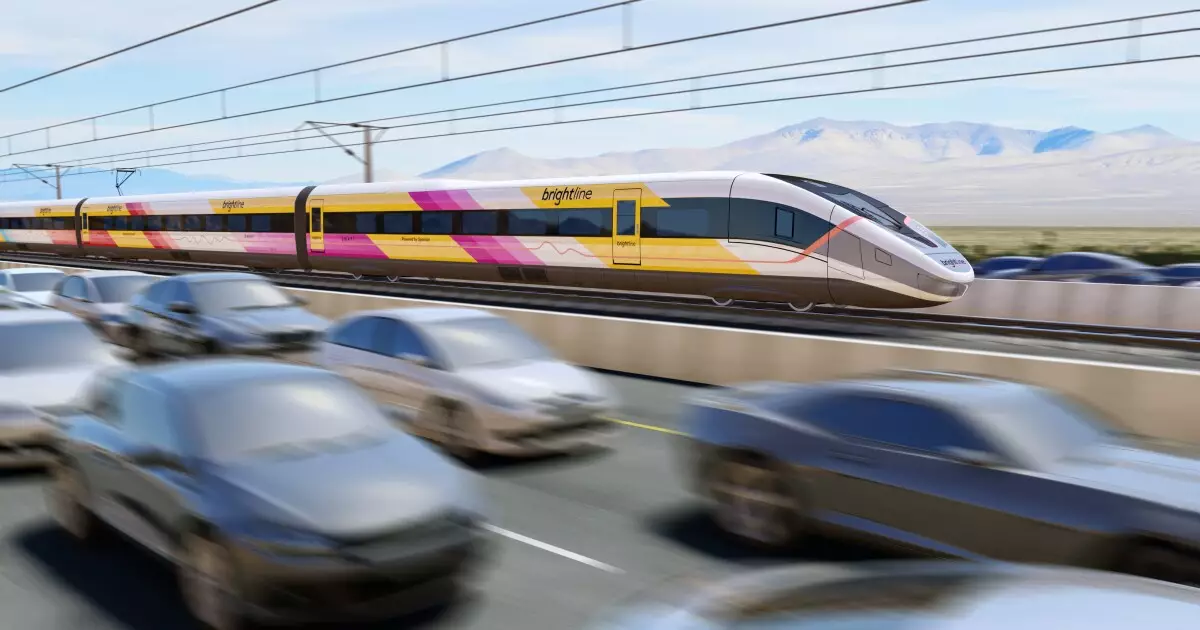Brightline West represents an audacious step toward revolutionizing intercity travel between Las Vegas and Southern California. With a projected cost of $12.4 billion, the initiative aims to introduce the first privately-owned, all-electric high-speed train service in the United States. Currently, the project is preparing to issue $2.5 billion in unrated private activity bonds (PABs), which signifies a significant leap in financing and development. This financial strategy is not just a means to fund construction; it intends to refinance existing debt while also bolstering reserve accounts, highlighting the ambitious nature of this undertaking.
The decision to issue these unrated bonds is crucial for multiple reasons. Firstly, this move may set a precedent as one of the largest unrated deals in the municipal market for the year, illustrating confidence in private infrastructure investments at a time when public funding is often scrutinized. Furthermore, the company has a crucial timeline of 180 days post-bond issuance to secure an additional $6 billion in bank financing. This additional capital could include a tax-exempt tranche amounting to $1.5 billion, coupled with equity investments, emphasizing a multifaceted approach to funding that reflects the complexity and scope of the project.
However, the risks involved in failing to secure these additional funds are pertinent. Without this financial support, the company faces the harsh reality of mandatory redemption—an alarming prospect for investors and stakeholders alike. It is a stark reminder that the path to ambitious infrastructure projects is fraught with uncertainties, and the market’s response to these developments will be closely monitored.
Brightline West’s vision involves not just innovative transportation technology but also a concerted plan to streamline travel between major urban centers. The 218-mile route primarily follows the I-15 corridor, with trains designed to achieve speeds of up to 186 mph. The anticipated travel time of two hours will transform a journey that once took six hours by car, making it a compelling alternative to conventional modes of transport. Notably, the planned service is set to launch by December 2028, which poses significant challenges regarding project management and timelines—a recurring theme for high-speed rail projects across the nation.
The construction phase is set to begin shortly, reflecting the urgency of advancing the initiative before broader market conditions shift. By strategically securing federal grants—$3 billion already allocated—Brightline seeks to reinforce its financial foundation, despite facing challenges from various factions regarding public funding in alternative rail projects.
The economic forecast for Brightline West is robust, with an expectation of generating approximately $1.4 billion in revenue by 2031, the first year expected to show stabilized operations with 8.6 million riders projected to utilize the service. This potential represents not merely a win for Brightline but also a forward-thinking vision for sustainable urban transit solutions. The involvement of high-profile entities such as Morgan Stanley and various other banks highlights the increasing interest from institutional investors in high-yield municipal bonds associated with innovative infrastructure ventures.
Moreover, the notion of seeking investment-grade ratings for outstanding tax-exempt bonds following construction completion suggests a long-term strategy aimed at strengthening financial viability through improved market perception.
This project is born amidst contrasting political climates, receiving bipartisan support amid aggressive scrutiny of alternative public-funded transportation solutions. The interim successes of Brightline in Florida bolster its credibility, yet it remains to be seen how the private sector will navigate political tides and market reception in an era where infrastructure investment continues to evolve.
Brightline West poses an exciting opportunity to transform travel dynamics in a region characterized by heavy vehicle congestion. The financing strategies, construction timelines, and projected economic benefits collectively point to a pioneering venture that underscores the critical intersection of private investment and public need. The success of Brightline West may pave the way for future high-speed rail developments across the nation, fostering a new era of connectivity while challenging existing paradigms surrounding transportation infrastructure investments.

